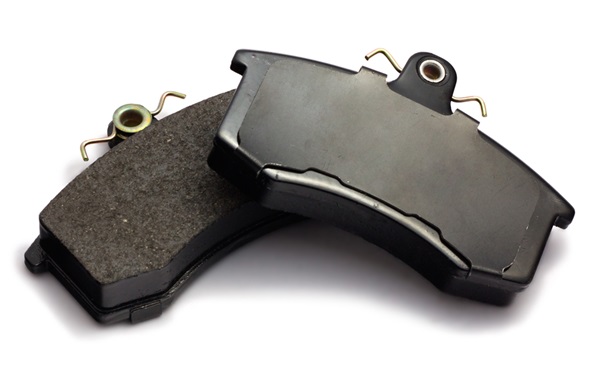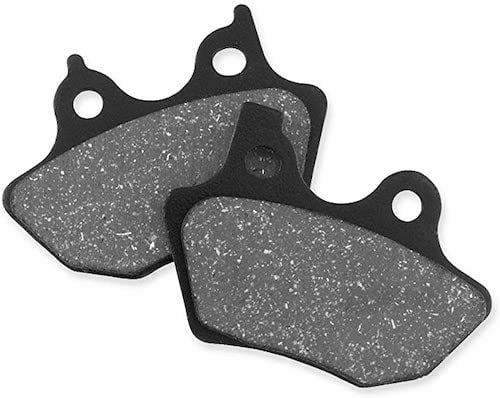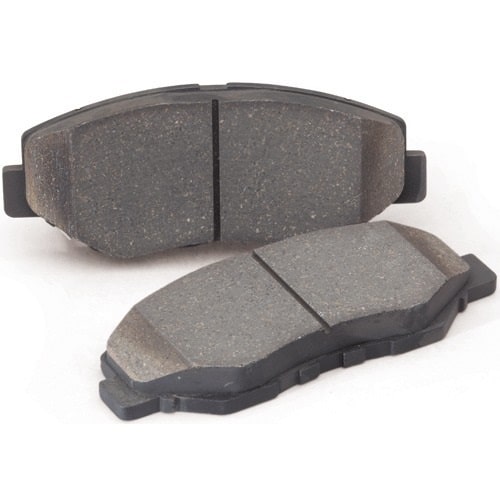Brake pads ensure vehicle safety by providing the necessary friction to slow down and stop your car.
Over time, brake pads wear down due to regular use, and it’s essential to know when to replace brake pads to maintain optimal braking performance.
Neglecting worn brake pads can compromise your ability to stop quickly and safely, putting you and others at risk.
Regularly inspecting your brake pads and being aware of signs of wear can help you determine when they need to be replaced.
In this article, we’ll discuss the signs of worn brake pads and the importance of timely replacement to keep your vehicle in top condition and ensure your safety on the road.
Understanding Brake Pad Wear and Tear

Brake pad longevity depends on various factors, and understanding these can help you determine when to replace them.
In the following segment, we have listed a few generic issues that your brake pad encounters and compromises with your vehicle’s overall safety.
1. Driving Style
Aggressive driving habits, such as sudden and frequent hard braking, can significantly reduce the lifespan of brake pads.
Smooth, gradual stops and maintaining a safe following distance help preserve brake pad life by reducing the amount of heat and friction generated during braking.
Anticipating traffic and coasting to a stop when possible can also minimize wear on brake pads.
2. Driving Environment
Flat, desert roads with minimal elevation changes are generally easier on brake pads than hilly or mountainous regions, where more frequent and intense braking is required to control vehicle speed on descents.
City driving typically involves more stop-and-go traffic, leading to increased brake pad wear compared to highway driving, where braking is less frequent and more gradual.
Extreme hot and cold temperatures can affect brake pad performance and wear.
High temperatures can cause brake fade, while cold temperatures may require longer stopping distances.
3. Vehicle Use
Daily commuting in stop-and-go traffic will wear out brake pads faster than occasional leisurely drives.
Towing heavy trailers or hauling heavy loads puts additional strain on the braking system, causing brake pads to wear more quickly due to the increased weight and demand on the brakes.
Vehicles used for commercial purposes, such as delivery vans or taxis, often experience higher brake pad wear due to frequent daily stops and starts.
4. Brake Pad Material
Organic or non-metallic brake pads, made from carbon, rubber, and fiberglass materials, are generally the most affordable but tend to wear out faster than other types.
They offer quieter operation but may not provide optimal performance in extreme conditions.
Semi-metallic brake pads contain metal fibers mixed with the friction material, providing better heat dissipation and longer life than organic pads. However, they may produce more brake dust and noise.
Ceramic brake pads offer excellent stopping power and produce less dust and noise than semi-metallic pads.
The lifespan of brake pads:
On average, brake pads last between 25,000 and 70,000 miles, with most needing replacement around 45,000 miles.
However, due to the numerous variables affecting pad wear, it is recommended that you inspect your brake pads every 5,000 miles or whenever the wheels are removed for maintenance.
Signs That Your Brake Pads Need Replacement

Recognizing the warning signs of worn brake pads is crucial for maintaining your vehicle’s safety and performance. Pay attention to the following indicators that suggest it’s time to replace your brake pads:
1. Screeching or Squealing Noises:
Brake pads often have built-in wear indicators, typically a small metal strip embedded in the friction material.
As the brake pads wear down, the metal strip becomes exposed and contacts the rotor, producing a high-pitched screeching or squealing noise.
This noise is designed to alert the driver that the brake pads are nearing the end of their life and need to be replaced.
If you hear this noise consistently when applying the brakes, it’s clear that your brake pads need attention.
2. Grinding or Metal-On-Metal Sounds
If you hear a grinding, growling, or metal-on-metal sound when braking, it’s a severe indication that your brake pads are completely worn out.
This noise occurs when the brake pad backing plate directly touches the rotor due to the friction material being entirely worn away.
Continuing to drive with this issue can cause significant damage to the rotors, requiring costly repairs or replacement.
If you experience these sounds, stop driving the vehicle and have the brake pads replaced immediately.
3. Reduced Braking Performance
As brake pads wear down, you may notice a decrease in braking responsiveness or a “spongy” feeling when pressing the brake pedal.
If you find yourself pressing the brake pedal harder or needing a longer distance to stop the vehicle, it could signify worn brake pads.
Reduced braking performance can also be caused by other issues, such as air in the brake lines or low brake fluid, so a professional must inspect the system.
4. Vibrations or Pulsations in The Brake Pedal
If you feel vibrations or pulsations in the brake pedal when applying the brakes, it may indicate that your brake pads are worn unevenly or that the rotors have become warped.
Uneven pad wear can cause inconsistent contact between the pads and rotors, leading to vibrations during braking.
Warped rotors, often caused by excessive heat buildup, can also cause pulsations in the brake pedal.
If you experience these sensations, inspect your brakes and replace the pads and/or rotors as necessary.
5. Brake Pad Thickness
Brake pads come with a specified minimum thickness, typically between 3-4 millimeters (mm), which is crucial for proper functioning and safety.
Generally, if your brake pads have worn down to 3 mm or less, it’s time to replace them.
Some brake pads have wear indicators that become visible when the pad material reaches a certain thickness, providing a visual cue for replacement.
To accurately assess brake pad thickness, it’s best to have a professional mechanic inspect your brakes during routine maintenance or if you suspect any issues.
Remember, ignoring these warning signs and continuing to drive with worn brake pads can compromise your safety and lead to more extensive and costly damage to your braking system.
If you encounter any of these symptoms, have your brakes inspected by a qualified technician and replace the brake pads as needed to ensure optimal braking performance and safety.
Choosing the Right Brake Pads for Your Vehicle
When replacing your brake pads, select the right friction material to ensure optimal braking performance, longevity, and comfort.
The three main categories of brake pad materials are organic, semi-metallic, and ceramic, each with its advantages and disadvantages.
In the following segment, we will detail each of the three types and discuss their advantages and disadvantages.
1. Organic Brake Pads

Organic brake or non-metallic pads are constructed from carbon, rubber, fiberglass, and other organic compounds.
These materials are bound together with resin to create a soft, quiet, affordable braking option.
Organic pads are generally the most budget-friendly brake pad material, making them a popular option for cost-conscious vehicle owners.
They are also known for their relatively quiet operation, producing minimal noise during braking, which can be appealing to drivers who prioritize a peaceful driving experience.
However, the main drawback of organic brake pads is their shorter lifespan compared to other pad types.
Due to their softer composition, they wear out more quickly, especially under heavy use or high-temperature conditions.
This means vehicle owners may need to replace organic brake pads more frequently than semi-metallic or ceramic alternatives.
Pros:
- Affordable pricing
- Quiet operation
- Soft and gentle on brake rotors
- Suitable for everyday driving
Cons:
- Shorter lifespan compared to other pad types
- It may not provide optimal stopping power in demanding situations
- Prone to faster wear in high-heat conditions
- It may not be suitable for heavy-duty or performance-oriented driving
2. Semi-Metallic Brake Pads

Semi-metallic brake pads combine metal fibers, such as steel, copper, or iron, with friction modifiers and other materials.
The metal content in these pads typically ranges from 30% to 65% of the total composition.
Metal in the friction material offers several advantages over organic pads.
Firstly, semi-metallic pads are more effective at dissipating heat generated during braking.
This improved heat dissipation improves braking performance, especially under heavy use or high-temperature conditions.
As a result, semi-metallic pads are often preferred by drivers who frequently engage in more demanding driving situations, such as towing or mountainous terrain.
Another benefit of semi-metallic brake pads is their increased durability and longer lifespan compared to organic pads.
The metal content makes these pads more resistant to wear and tear, reducing the frequency of brake pad replacements.
Pros:
- Improved heat dissipation for better braking performance
- Longer lifespan than organic pads
- Suitable for heavy-duty use and towing
- Excellent performance in a wide range of temperatures
Cons:
- Increased brake dust production
- Potential for noise during low-speed braking
- It may cause more wear on brake rotors compared to other pad types
- Slightly reduced cold-weather performance compared to ceramic pads
3. Ceramic Brake Pads

Ceramic brake pads are the premium option in the brake pad market, offering exceptional performance, durability, and comfort.
These pads are manufactured using a dense ceramic material, typically composed of ceramic fibers, copper fibers, and other proprietary ingredients.
The ceramic composition provides several distinct advantages over organic and semi-metallic pads.
One of the most notable benefits of ceramic brake pads is their outstanding stopping power.
The dense ceramic material offers superior friction and heat resistance, allowing quick and efficient braking, even under demanding conditions.
This makes ceramic pads an excellent choice for high-performance vehicles, such as sports cars or luxury automobiles, where optimal braking performance is crucial.
Pros:
- Exceptional stopping power, ideal for high-performance vehicles
- Cleaner operation with less brake dust
- Quieter than semi-metallic pads
- Longer lifespan compared to organic and semi-metallic pads
Cons:
- Higher cost than organic and semi-metallic pads
- It may require a warm-up period in colder temperatures for optimal performance
- Heavier than other pad types, which can slightly impact fuel efficiency
- Less effective at dissipating heat compared to semi-metallic pads
When choosing the right brake pads for your vehicle, consider your driving style, vehicle type, and personal preferences.
Organic pads may be the best choice if you prioritize quiet operation and lower cost.
For improved performance and longevity, semi-metallic pads are a good option.
Ceramic pads are the top choice if you have a high-performance vehicle and want the best stopping power and reduced brake dust.
Consulting with a professional mechanic or your vehicle’s manufacturer recommendations can also help you select the most suitable brake pad material for your specific make and model.
Final Words: The Essentiality to Keep a Check on Brake Pad
Maintaining your vehicle’s brake pads ensures a safe and reliable driving experience.
By understanding the signs of wear, such as squealing noises, reduced braking performance, and vibrations, you can identify when to replace your brake pads.
Regularly inspecting your brake pads and knowing their thickness can help avoid costly repairs and potential safety hazards.
When selecting new brake pads, consider your driving style and requirements to choose the most suitable friction material for your vehicle.
Remember, investing in quality brake pads and timely replacements is essential for maintaining your car’s braking system and overall safety on the road.
We’d love to hear from you – share your thoughts and experiences on brake pad maintenance in the comments below!

